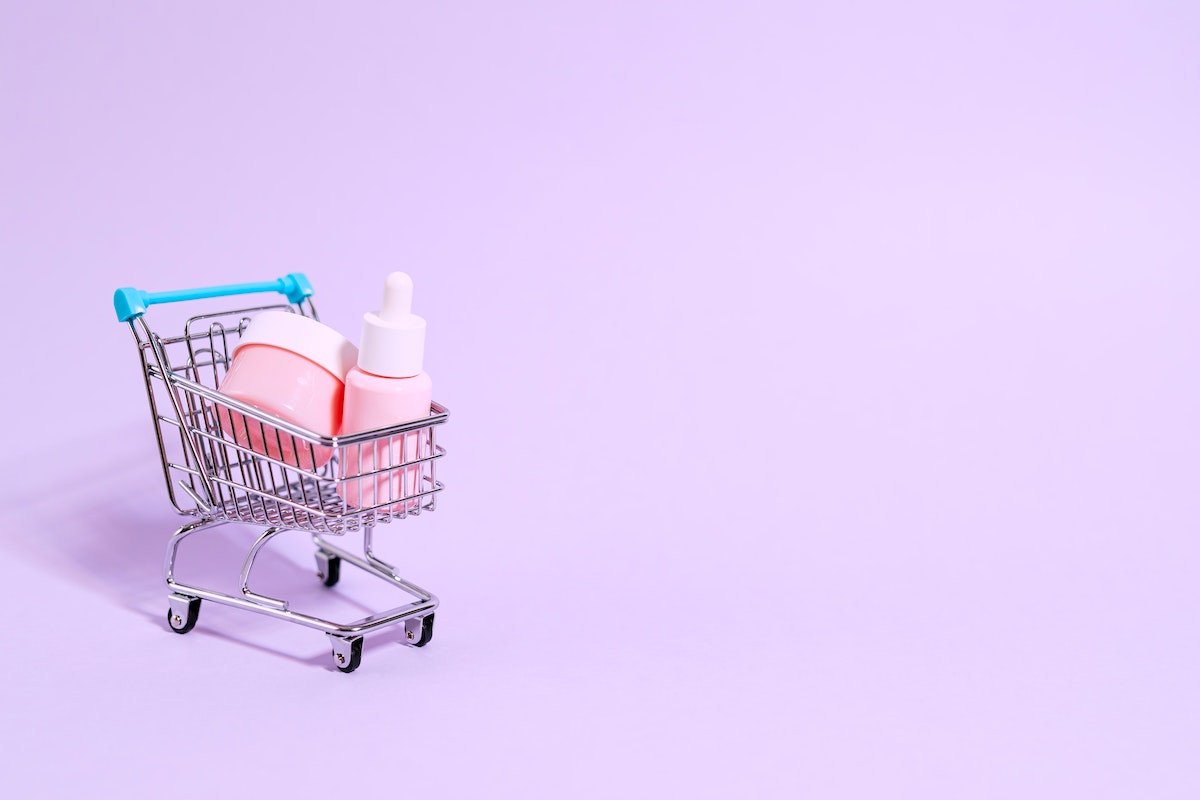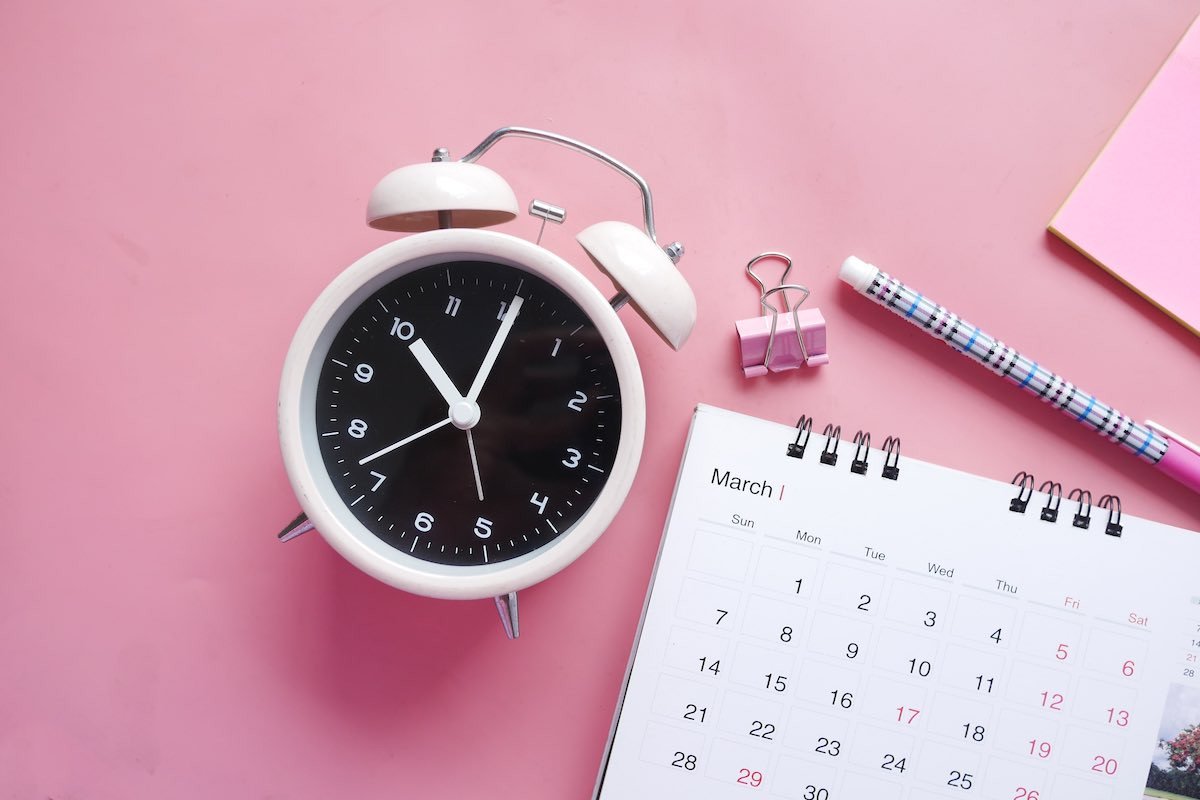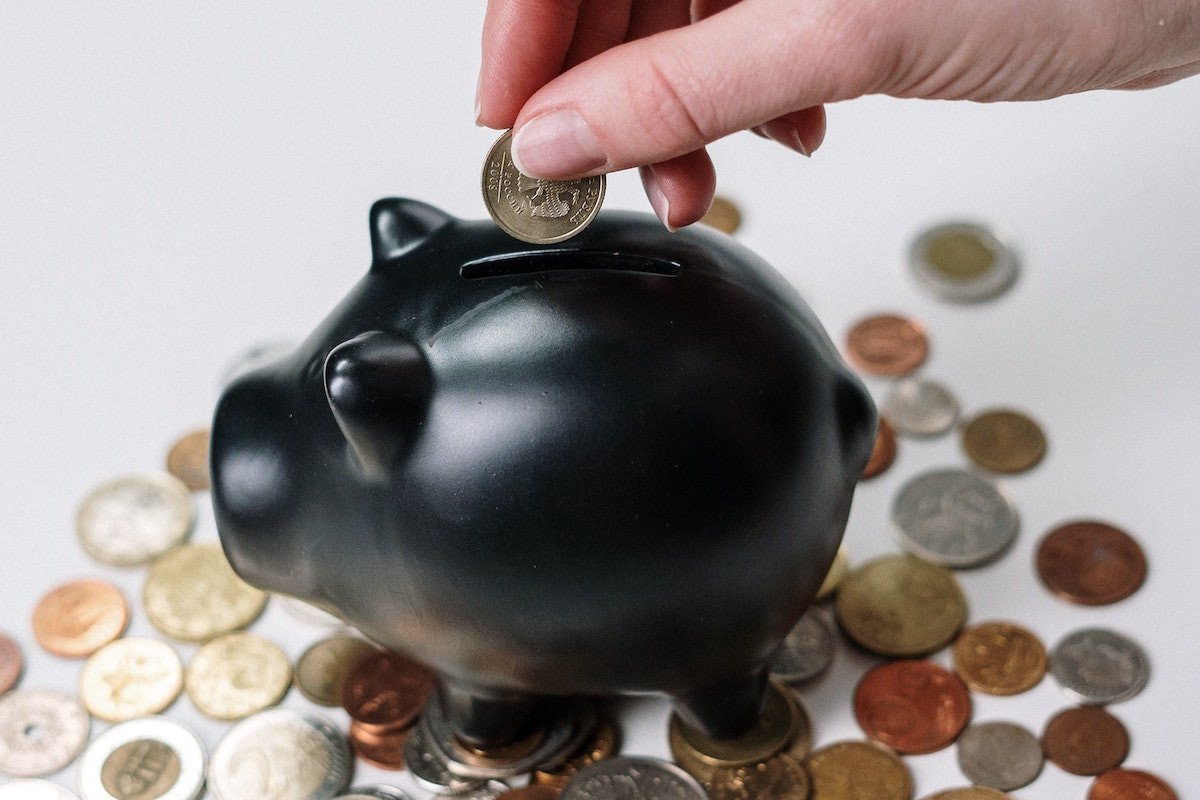Photo by Karolina Grabowska from Pexels
The biggest problem with impulse buying is that it can feel so good in the moment.
Let's quickly rewind to 2020. I remember my first few quarantine purchases. I was freshly postpartum, spending hours of my day with a Spectra attached to me, sleeping very little, and scrolling Instagram a lot—and the advertisers knew it.
Fast forward a year later—I realized I had become addicted to the feeling of filling a shopping cart and either abandoning it or hitting the buy button. I loved the stimulation of pressing BUY. Hello, serotonin!
Then I waited for the shipment notification (serotonin boost!) and heard the knock at the door a few days later (serotonin overload!).
Like many others, I fell in love with the idea of buying something online then receiving it a few days later. I'm not alone, either.
In a world where inflation is top of the news and home ownership feels out of the question, impulse buying feels like a way to give the bird to a seemingly impossible world. Unfortunately, we only hurt ourselves when we take the "F it" approach to spending.
According to
a survey conducted in 2022, consumers in the United States spent an average of over 300 U.S. dollars on impulse purchases each month.
What is Impulse Buying?
Impulse buying, simply put, is buying something you didn’t plan on buying. Whoops!
Many of us are familiar with this phenomenon. It happens on a trip to Target, where we buy a little (or a lot more) than we intended. To add to it, we forget to get what we came for in the first place. I forgot to get the mouthwash!
It happens when we hit the supermarket a little too hungry. It’s when we have a bad day and we say, “Forget the budget. I’m getting that sweater I want.”
Here’s the thing. Impulse buying isn’t always a bad thing, in my personal opinion. However, like anything, it’s always best to do it in moderation—and to have an awareness of what’s actually happening.
Why Do I Buy Impulsively? The Psychology of Impulse Buying
Most of the time, we spend more to feel better.
According to the survey by
Slick Deals, 72 percent of respondents reported that their mood was positively affected by an impulse buy.
65 percent reported that an impulse buy can turn a bad day around. Can you say relatable?
Impulse buying isn’t always
selfishly motivated either—many reported that we buy things for our loved ones to feel better. This came as no surprise to me, a person who bought her son a lobster costume on a whim to make everyone’s day a little brighter. And guess what—it worked!
The key sources of impulse buying are associated with your intent or
personality traits. According to
New Neuro Marketing, three common traits that are often associated with impulse buying are:
1. Sensation Seekers
Sensation seekers are looking to buy in order to experience. They don’t typically consider the risks involved in spending too much money or beyond their means.
Sensation seekers might hit online shopping when they feel bad (guilty) or hit Target when they’re
bored or disengaged (also guilty).
2. Those With Impulse Buying Tendency
Impulse buyers tend to buy impulsively—pretty simple. This is a trait the consumer has—and they’re likely aware of it, but don’t always see it as a “problem.”
3. Consumer-Driven Self-Identity
Self-identity is deeply rooted in a lot of today’s purchases. If you look at fast fashion, which can cycle within weeks or even days, this is the desire to be on top of trends.
On a more expensive front, it’s consuming the high-end brands that
show “who” you are—especially when it comes to status, style, or perceived good taste.
How Retailers Prey on Potential Impulse Buyers
It’s no big surprise that we are prone to impulse purchases. Everything is set up to trigger our emotions to keep us spending. It’s basically inescapable.
Modern-day retailers are experts in consumer behaviors. Both in-person and online shopping are
manipulated—every step of the way. Let’s explore some of the ways that retailers alter, well, everything, to ensure that consumers buy even more than they set out to buy in the first place.
How Brick and Mortar Stores Encourage Impulse Buying
If you’re a grand-millennial like me (that’s what we’re calling us now?), you are familiar with the loud music, cologne-soaked environment of Abercrombie + Fitch.
On top of that, they published a risque catalog geared directly at hormonal teenagers. A+F absolutely mastered the game of in-store distractions. They knew how to to use sensory experiences and store atmosphere (even if it reeked of cologne) to optimize buying power.
Other retailers use positive emotions and other effective marketing stimuli to get you (and keep you) buying!
Here are some other tactics physical stores use to encourage impulse buying. For example, have you seen the checkout line items at a TJ Maxx or a Sephora?
- Stimulating environments
- Bold and graphic signage
- Associations between brand and positive feelings
- Checkout line “bonus” items
- Price discounts and markdowns
How Online Retailers + Advertisers Encourage Impulse Buying
If you’re more prone to the temptations of online shopping, you’re familiar with some of the following tactics.
Since your browser is essentially the key to your wants and needs, advertisers can be one step ahead of you—at all times. Sometimes this is really helpful.
Other times, you’ll search for a wool cardigan and you’ll be served every ad for a wool cardigan in existence—sometimes after you’ve already bought the thing!
- Time-based or quantity-based deals
- Email marketing
- Heavily targeted social media ads
- Influencer marketing
- Abandoned shopping cart emails
- Free shipping
5 Signs You Might Be an Impulse Buyer
If you suspect you might be an impulse buyer—or that you’re caught in a cycle of impulse buying, check out some of the following “symptoms” related to repetitive impulse buys.
1. You Find Yourself Shopping to Feel Better
If you head out to the store—or to your favorite retailer’s site—
when you’re feeling low, you might be bandaging your emotions with retail therapy. I’m certainly not here to tell you it’s wrong. Sometimes, it really does the trick.
This can be dangerous territory, as emotionally-based impulsive shopping can turn into compulsive shopping. Compulsive shoppers plan their shopping as an active way to relieve stress or anxiety—on a regular basis.
Compulsive shoppers are more likely to run into financial problems, engage in arguments with loved ones, and fall into a deeper addiction.
If you have a persistent urge to keep shopping, you might be a compulsive buyer. Take a look at this
guide to online therapy to root it out.
2. You Are Shopping to Compete
You just attended a housewarming party at your friend’s new place and she has every kitchen gadget ever—seriously.
Now, you’re piling lemon zesters, spatulas, cookie sheets, and woks into your cart—but, wait, you don’t even like cooking.
If you find yourself in a cycle of competitive shopping, slow down. It’s great to get inspiration from others, but if you’re buying just to “keep up with the Joneses,” curb it.
No matter how many great (unread) books you have, someone will always have a more impressive bookshelf. Someone will always seem to have better clothes, the perfect pillows (seriously, what is it with pillows?), and the list goes on!
With this type of behavior, it’s crucial to recognize it—and take a moment to consider
what’s actually important to you. You don’t need the dream kitchen—mostly because you don’t dream about kitchens, anyway.
3. You’re Bored
Hi, it’s me!
Sometimes I shop because I am bored. I’ll ask my son, “Want to go to the store?” and he warbles back nothing, which I take as a resounding yes.
The next thing you know, he’s in that big red cart and I am handing him a little board book or a rubberized car. We get our grocery shopping done. I get a shirt and a hair clip. It feels pretty harmless, but it’s not. For one thing, I feel like I could be teaching my son that boredom shopping is a totally cool behavior when it’s actually a bit of a
soft addiction.
So how do you make sure you’re not falling into a boredom shopping hole? It’s sort of easy—okay, maybe embarrassingly so. Do something else.
Read the books piling up on your nightstand (extra point if they’re books from one of your previous boredom trips to the store!). Go outside. Try a new recipe you’ve been wanting to try. Stretch out on the couch. Write out how you’re feeling. Draw something! Email an old friend.
Many times, boredom shopping is just a quick fix—just like emotional shopping. The next time you feel the itch to meaninglessly shop, ask yourself this, “What else could I do to feel better or more motivated?”
Ideally, it’ll be something that doesn’t hit your bank account.
4. Your Finances Are Suffering
If stress and anxiety make you spend beyond your means, it's likely to cause more—you guessed it!—
stress and anxiety.
Usually, the damage to
your bank account is the big red flag that causes you to stop in your tracks. You don't want to turn your desire for a little comfort into debt.
If you have to look at your credit card bill with your hands intermittently covering your eyes, your spending likely needs an overhaul. To put things into clear perspective, print out your monthly bank statements over the last few months. Circle all of the purchases you made that were unnecessary or superfluous. Add up the amount of money you spent on these items.
Now, imagine having this money in your account—or better yet, imagine having this money in your savings account.
5. You Have Too Much Stuff
Feel like you're a roll of paper towels away from being featured on an episode of Hoarders? You're likely an impulsive buyer—or you might already be in compulsive territory.
We've all probably done the thing where we pick up an item in a store, show it to our friend—only to have them say something like "You're wearing the same thing right now."
As humans, we can be creatures of habit. As such, we find comfort in familiar things. All of a sudden, our closets start to look like Mr. Rogers's closet—with 50 copies of the same thing in different colors. Similarly, you might use shopping as a way to "prep" for one thousand dinners into the future. Here's the thing. You don't need to have everything right now.
If you're starting to exhibit behaviors wherein you're buying the same things over and over, ask yourself this question: "Do I need this today or tomorrow?" If not, try holding off.
5 Ways to Stop Overspending
We have already touched on a few ways you can curb your impulse buys. I want to take this opportunity to reiterate that there is no shame in buying something nice for yourself.
Retail therapy has that cute nickname precisely because it works—but only sometimes.
Here are a few ways I like to curb my spending—both online and offline. I’m a big fan of gamification, so I like to use those tactics to make something uncomfortable feel like it’s actually “fun” instead.
1. Avoid Typical Temptations
Once I recognized that I was indulging a little too often, I removed the easiest (and most personally insidious) tempters. I unfollowed (or at least muted) any brand or retailer that I loved.
Since my own “problems” started with Instagram ads, removing the Insta-temptation was the most logical first line of defense for me.
Other ways you can cut out similar temptations:
- Unsubscribing from marketing emails
- Unfollowing influencers who are just too good at influencing you
- Clearing your browser cookies (or at least clearing out the retailers and brands)
- Unsaving your credit card information from your browser and phone
- Blocking yourself from your favorite sites, at least for awhile
- Deleting any online shopping apps on your phone (yes, that absolutely means Amazon)
2. Create “Fun” Budgets
Remember when I said retail therapy is effective sometimes? Well, I meant it!
That doesn’t mean you can’t plan for your therapy sessions, right? Just like scheduling your own therapy, you can
set aside a budget for something purely fun. If you don’t end up using it, that’s great too!
You can save the money or allow it to roll into something else—maybe even a future vacation?
It’s fine to enjoy the money that you earn. By creating a budget (which is one of the more “un-fun” words in the alphabet) while you’re feeling sound and rational, you’re ensuring that your “fun” budget doesn’t lead to debt (okay, this is the biggest bummer word in the alphabet!).
3. Save to Buy a “Big” Item
When I started to come to grips with impulse buying, I explained to my husband that it still felt novel to me to have money of my own to spend.
I grew up with nine siblings. My parents were laser-focused on getting us educated—no matter what. This meant lots of trips to the Bursar to explain why my tuition was a little late. My parents also had a “you can’t take it with you” mindset about money—a mindset that I value and that I hate.
This is all a long-winded way of saying that sometimes I’d buy things because it feels novel that I even have money left over after paying all my bills (and buying all the diapers).
So, when I see something “big” and my brain says “I want this,” I walk away and
create a savings plan over the next three or four weeks. If for some reason, I can’t wait that long for a non-essential item, it’s doubtful that I needed it in the first place.
An added bonus of this approach? While you save for the item, you might decide you no longer need it or it might go on sale. All of a sudden, you have surplus “fun” funds!
4. Always Give It 24-48 Hours
How many items have you walked away from—only to completely forget about them? Hundreds, maybe thousands. It’s hard to count because you literally don’t remember them.
The next time you’re online or in a store and you get a bad case of unexpected wants, try walking away. If you’re still thinking about the items 48 hours later, then re-consider buying it, because you really want it.
Again, remember that the whole “scarcity” thing is a ploy to get you to buy the item, at full price, right now. If you can’t get the $300 neon green pleather pants in 48 hours due to fear of it selling out, they might just be too hot for you.
5. Create No-Spend Challenges
The idea that habits are built within 21 days is a myth.
However, there is something to be said for beginning new habits on a timed basis—or by gamifying your efforts. That’s why “no-spend” days, weeks, months, or even years are a popular way to save money and to shake off bad habits.
If you’re looking to save money or stop mindlessly shopping, try one of many popular money challenges. You can make your own rules, create a time range, and even create small repercussions to “pay” if you break a rule—sort of like the old swear jar.
No-spend challenges are a great way to cut out the things you mindlessly buy—and without the “option” to spend time perusing hundreds of jackets, you might just pick up a book from the top of your pile. I know that’s what I did.
In Conclusion
Take me, for example. After reading this article, it probably comes as no surprise that I wasn’t the strongest math student.
However, I wonder if my high school had offered a savings and budgeting mathematics class instead of a statistics class, maybe I’d be better with money.
At least I would have thought about it sooner—and about all of its psychological effects, both when you have it—and when you don’t.
When managing your money, there is so much shame-based content out there. Even more damaging, there’s still so much content that tells women that they are one certain way (aka: not good) with money—and that men are another way (aka: very balanced and very good). Okay, tell that to every dad’s mid-life crisis two-seater Miata.
Like all tired narratives, throw it away.
If you feel that you want to be better with your money, try to be. Try what works for you. There is no one-size-fits-all.










